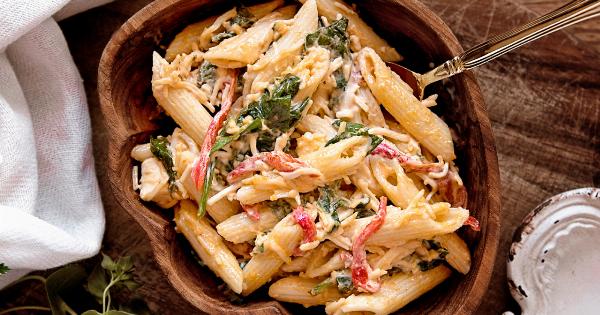Eating healthy and maintaining a balanced diet is important for overall well-being and optimal physical and mental performance. It is especially crucial for children and teenagers who spend a significant portion of their day at school.
Schools play a vital role in promoting healthy eating habits and offering nutritious food options to students. However, navigating through the sea of choices in the school cafeteria or vending machines can be challenging. In this article, we will discuss how to make the best food choices in school to ensure a healthy and nourishing diet for students.
1. Pack Your Lunch
One of the easiest ways to have control over what you eat in school is to pack your lunch. By bringing a homemade lunch from home, you have the freedom to choose nutritious and balanced options that align with your dietary preferences and requirements.
You can include a variety of fruits, vegetables, whole grains, lean proteins, and healthy fats. Avoid packing processed and sugary snacks and instead opt for homemade alternatives like granola bars or trail mix.
2. Understand School Meal Programs
Many schools provide meal programs that offer breakfast and lunch to students. These programs follow nutritional guidelines set by the government to ensure the meals are balanced and nutritious.
Familiarize yourself with these guidelines and make informed choices when selecting meals from the school cafeteria. Look for whole grain options, fresh fruits and vegetables, lean proteins, and low-fat dairy products.
3. Read Nutrition Labels
When purchasing food from vending machines or snack bars in school, take the time to read and understand the nutrition labels. Focus on the serving size, calorie content, and nutrient information.
Look for foods that are low in added sugars, saturated fats, and sodium. Opt for snacks that are high in fiber and contain essential vitamins and minerals.
4. Choose Water or Milk
Hydration is key for maintaining good health, concentration, and overall well-being. Instead of reaching for sugary sodas or fruit juices, choose water or milk as your beverage of choice.
Water is essential for proper functioning of the body and can be flavored naturally with fruits or herbs for added taste. Milk provides essential nutrients like calcium and vitamin D. If you choose flavored milk, make sure it doesn’t contain excessive added sugars.
5. Practice Portion Control
Even if the food choices in the school cafeteria are not always the healthiest, you can still make better choices by practicing portion control. Avoid oversized portions and instead focus on smaller, balanced meals.
Fill half of your plate with fruits and vegetables, one-quarter with whole grains, and one-quarter with lean protein. This way, you can enjoy a variety of foods while keeping your portions in check.
6. Be Mindful of Snack Choices
Snacks play an important role in keeping energy levels stable throughout the day. However, it’s crucial to choose nutritious snacks that provide the right nutrients without excessive added sugars or unhealthy fats.
Opt for fresh fruits, nuts, yogurt, or cut-up vegetables with hummus. If you’re buying packaged snacks, look for options that are low in sodium and saturated fats.
7. Involve Parents and Guardians
Parents and guardians have a significant influence on the eating habits of children. By involving them in the decision-making process, you can work together to make healthier choices.
Discuss your preferences and concerns with your parents or guardians, and find solutions that work for everyone. This could include packing your lunch together or brainstorming ideas for nutritious snacks.
8. Advocate for Change
If you notice that your school’s food options are lacking in quality or variety, consider advocating for change.
Collaborate with other students, parents, and teachers to raise awareness about the importance of healthy eating and make suggestions for improvement. By working together, you can create a supportive environment that prioritizes the well-being of students.
9. Seek Nutritional Education
Understanding the importance of healthy eating and learning about nutrition are essential for making informed food choices.
Seek out opportunities to learn more about nutrition, either through your school’s health education program or outside resources. Educate yourself on the benefits of different food groups, the importance of vitamins and minerals, and how to interpret nutrition labels.
10. Set an Example
Lastly, set an example for your peers by making healthy food choices. When your classmates see you opting for nutritious meals and snacks, it may encourage them to do the same.
By leading by example, you can create a positive influence within your school community and promote a culture of healthy eating.





























